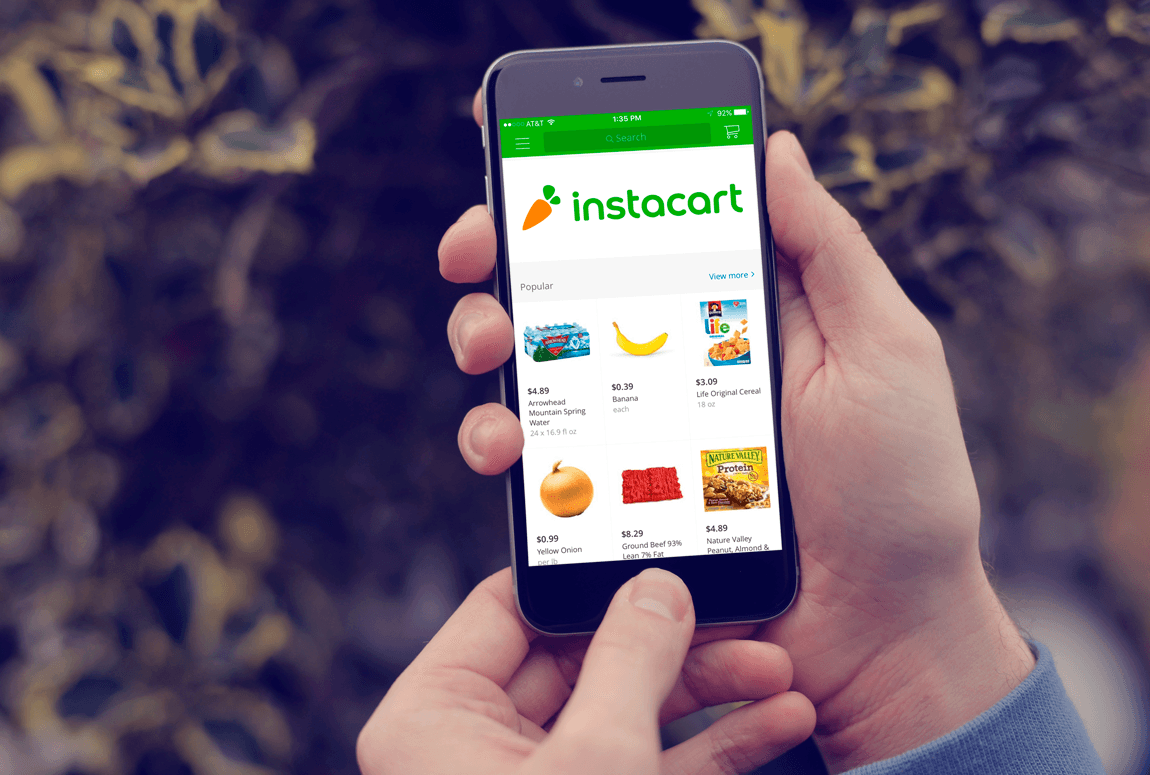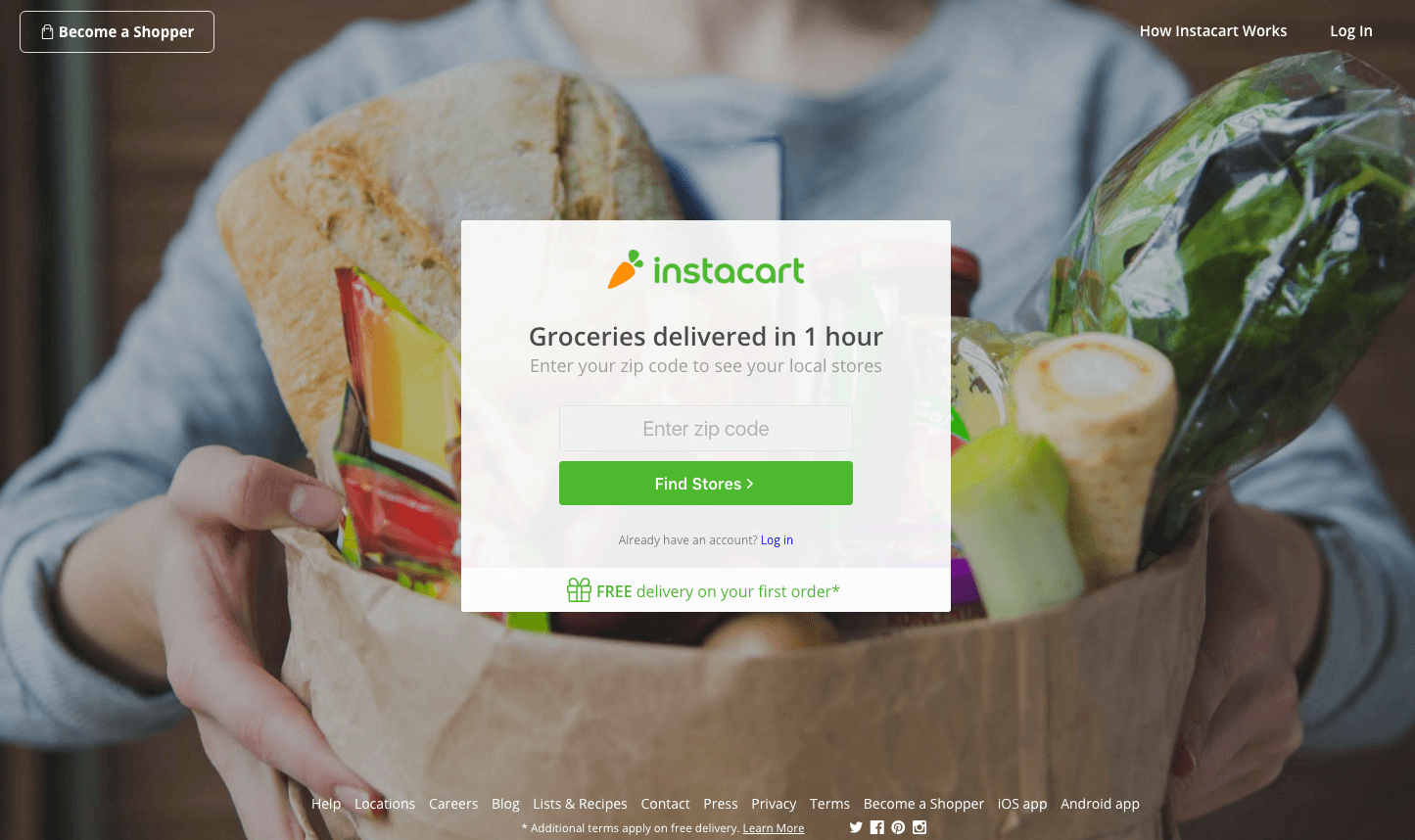How Instacart Increased Conversion by Understanding User Behavior
It’s possible for everyone at Instacart to explore user behavior and find answers to their questions.
Instacart is an on-demand service that delivers groceries in as little as an hour from local stores. Users can place orders on the website, iOS, or Android app. With these different user experiences, and many users moving between platforms, Instacart needed cross-platform tracking for measuring and understanding user behavior across web, mobile web, and native mobile apps.

Focus on core product: building vs. buying analytics
When Fareed Mosavat joined Instacart to lead their growth team, he knew they needed to get user tracking up to par quickly so that his team could show the results and impact of their experiments.
At the time, Instacart was using a hodgepodge of self-built tools and an internal database for analysis. They were tracking everything they needed to, but the data wasn’t very self-service — says Mosavat: “It took more work to get answers than it should have.” Queries had to be run through an analyst, so the turnaround times slowed things down even more.
They also knew that they would soon reach the point when their internal system could no longer handle their data volume, so they were faced with the decision whether to invest significant engineering resources in improving their internal system, or choose a third-party analytics vendor.
Mosavat decided to buy an analytics platform because he didn’t want to take time away from working on Instacart’s product, saying, “I’m much more interested in solving the core product problems than building technical infrastructure for analytics.”
Instacart’s two key requirements when evaluating analytics platforms were: (1) flexible tracking across platforms, and (2) the ability to track everything they needed without worrying about hitting event limits and costly overages. They soon found that Amplitude met these needs, and also presented the data in ways that matched how Fareed wanted to examine and cut the data.

_“We looked at a bunch of different analytics tools, and Amplitude was the closest to how we wanted to look at metrics. The segmentation by user properties is also the best we’ve seen.” _–Fareed Mosavat, Consumer Growth Product Manager, Instacart
The Goal: Getting users to complete their first order
Fareed’s biggest goal as the Consumer Growth Product Manager is to increase activation — in other words, increasing the number of people who visit Instacart and complete their first order. His aim is to get users to complete their first order as soon as possible by anticipating users’ needs and creating the best experience possible.
With Amplitude, Fareed was able to get a complete understanding of how users move through key funnels like first-time user sign-up and activation (placing their first order) on each platform. Now that they have a baseline understanding of user behavior, Fareed uses Amplitude for what he calls “opportunity analysis,” identifying opportunities for growth.
For example, his team looks at which funnel steps have the largest drop-offs, and especially compare the user experience across platforms to see which platforms have conversion rates that are lagging behind others. His team constantly adds to a long list of opportunities, prioritized based on what they hypothesize will have the largest impact. “We wouldn’t have this list if we didn’t have the data from Amplitude,” says Fareed.
Instacart’s team integrated their internal A/B testing system with Amplitude, so that they can easily segment user behavior and conversion rates by different experiments and variants. After running a large number of tests on things like landing page design and sign up flow, Fareed and his team ultimately improved the landing page conversion rate by 10% — huge by conversion rate optimization standards, especially for a company with millions of new users each month.
According to Fareed, his team ran dozens of tests, but there were a couple winning experiments and learnings that drove most of that 10% lift. For one test, his team thought that adding content to the web landing page (which used to be very bare bones without much context), would increase conversions. They built a beautifully designed landing page with photos, customer quotes, and lots of information — and conversion actually dropped by 8%. Next, they tried a simpler landing page that still had a beautiful image, but without all of the extra information — just a single call to action. With that redesign, they increased the conversion rate significantly over the original.

The team also tested the order of onboarding steps, like whether to ask users to create an account up front or further down in the checkout flow. Fareed found the flexibility of Amplitude’s funnels feature were a huge help in assessing test results: the ability to control how much time it takes to get through the funnel and choose between strict and loose ordering of funnel steps enabled him to easily compare conversion rates between different test variants. By using loose ordering for funnels, he could send users into different test flows and still be able to do a simple side-by-side comparison of the overall funnel conversion rate.
Understanding user behavior by building a data-driven product roadmap
With Amplitude, every engineer and product manager at Instacart can independently make well-informed product decisions backed by user behavior data. The growth team can comprehensively track everything they want and do what’s right for the product, instead of being constrained by what worked in their home-grown system. **Most importantly, it’s possible for everyone at Instacart to explore user behavior in Amplitude and find answers to their own questions, cutting out the analyst bottleneck and enabling much faster testing and iteration cycles. **
“We now have a much clearer sense of where our users getting confused or dropping off, and we are continuously identifying new opportunities for improvement and growth. It’s created a more data-driven product process where, instead of making guesses, which you still do a lot as a product person, we’re making informed guesses.” -Fareed Mosavat, Consumer Growth Product Manager, Instacart

Alicia Shiu
Former Growth Product Manager, Amplitude
Alicia is a former Growth Product Manager at Amplitude, where she worked on projects and experiments spanning top of funnel, website optimization, and the new user experience. Prior to Amplitude, she worked on biomedical & neuroscience research (running very different experiments) at Stanford.
More from Alicia




